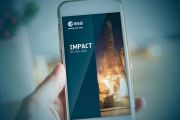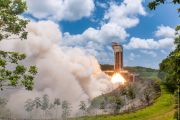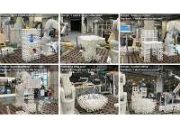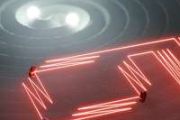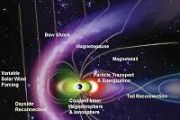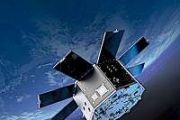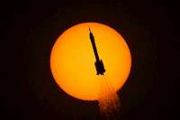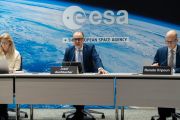
Copernical Team
Solar Orbiter’s unprecedented view of the quiet corona
 Video:
00:01:27
Video:
00:01:27
The ESA-led Solar Orbiter mission has experienced its second close encounter with the Sun. It is delivering more stunning data, and at higher resolution than ever before.
The moment of closest approach took place on 12 October at 19:12 UTC (21:12 CEST), when Solar Orbiter was just 29% of the Earth’s distance from the Sun. This movie comes from 13 October, when the spacecraft’s Extreme Ultraviolet Imager (EUI) returned the highest resolution movie of the quiet corona ever taken with any instrument.
Each pixel on this movie spans 105 km on the surface of the Sun. This means that
Webb offers never-before-seen details of early universe
 NASA's James Webb Space Telescope was specially designed to detect the faint infrared light from very distant galaxies and give astronomers a glimpse at the early universe. The nature of galaxies during this early period of our universe is not well known nor understood. But with the help of gravitational lensing by a cluster of galaxies in the foreground, faint background galaxies can be magnifi
NASA's James Webb Space Telescope was specially designed to detect the faint infrared light from very distant galaxies and give astronomers a glimpse at the early universe. The nature of galaxies during this early period of our universe is not well known nor understood. But with the help of gravitational lensing by a cluster of galaxies in the foreground, faint background galaxies can be magnifi New technique to determine age will open new era of planetary science
 The coming decade is expected to bring a veritable bonanza for the science of planets: space missions are scheduled to bring back samples of rock from the moon, Mars, the Martian moon of Phobos, and a primitive asteroid. And scientists say there is a new technique for determining the age of rocks, meteorites, and even artifacts, that could help open up a new era of discovery.
A group with
The coming decade is expected to bring a veritable bonanza for the science of planets: space missions are scheduled to bring back samples of rock from the moon, Mars, the Martian moon of Phobos, and a primitive asteroid. And scientists say there is a new technique for determining the age of rocks, meteorites, and even artifacts, that could help open up a new era of discovery.
A group with Arecibo Observatory scientists publish major study on near-earth asteroids
 The largest paper ever published on radar observations of near-Earth asteroids has been released, compiling years' worth of data from the Arecibo Observatory in Puerto Rico.
Using delay-Doppler radar observations collected from the observatory between December 2017 and December 2019, the study includes 191 asteroids' radar cross sections and Doppler-frequency broadening. This data can be u
The largest paper ever published on radar observations of near-Earth asteroids has been released, compiling years' worth of data from the Arecibo Observatory in Puerto Rico.
Using delay-Doppler radar observations collected from the observatory between December 2017 and December 2019, the study includes 191 asteroids' radar cross sections and Doppler-frequency broadening. This data can be u Trying to Avoid Nodules: Sols 3633-3634
 The long Sol 3631 drive went well, leaving the rover near exposures of nodule-rich bedrock. Because we have examined the chemical composition of nodules recently, a goal for today's planning was to find patches of bedrock that are relatively nodule-free in order to look for changes in the "background" bedrock.
So the Sol 3633 plan starts with a couple APXS integrations on "Balata," a bedro
The long Sol 3631 drive went well, leaving the rover near exposures of nodule-rich bedrock. Because we have examined the chemical composition of nodules recently, a goal for today's planning was to find patches of bedrock that are relatively nodule-free in order to look for changes in the "background" bedrock.
So the Sol 3633 plan starts with a couple APXS integrations on "Balata," a bedro NASA Lucy spacecraft captures moon images and 'Terminator Mosaic'
 NASA's Lucy spacecraft has captured new high resolution images of the Moon's Central Highlands surface taken while the spacecraft was between Earth and the Moon.
The Oct. 16 images were taken approximately 140,000 to 160,000 miles from the moon after Lucy flew by the Earth for its first of three gravity assists, the space agency said. They included a "Terminator Mosaic," as well as sing
NASA's Lucy spacecraft has captured new high resolution images of the Moon's Central Highlands surface taken while the spacecraft was between Earth and the Moon.
The Oct. 16 images were taken approximately 140,000 to 160,000 miles from the moon after Lucy flew by the Earth for its first of three gravity assists, the space agency said. They included a "Terminator Mosaic," as well as sing Thermal control designs keep astronauts cool on space station
 For astronauts, staying cool and comfortable on China's Tiangong space station is no problem. The station orbits Earth in about 90 minutes at an altitude of 400 km. It experiences large fluctuations in temperature, ranging from 150 degrees Celsius when the station is exposed to the sun to minus 100 degrees Celsius when over the night side of the planet. So how to protect station residents from e
For astronauts, staying cool and comfortable on China's Tiangong space station is no problem. The station orbits Earth in about 90 minutes at an altitude of 400 km. It experiences large fluctuations in temperature, ranging from 150 degrees Celsius when the station is exposed to the sun to minus 100 degrees Celsius when over the night side of the planet. So how to protect station residents from e PickNik Robotics wins Space Force contract for on-orbit capture
 PickNik Robotics has won a SpaceWERX contract to work on robotics for the US Space Force. In addition, the company recently won a NASA Small Business Innovation Research (SBIR) Phase I contract for continued work on supervised autonomy for space robotics, as well as a Colorado Advanced Industries Accelerator (AIA) grant for space robotics.
"These three wins provide additional validation of
PickNik Robotics has won a SpaceWERX contract to work on robotics for the US Space Force. In addition, the company recently won a NASA Small Business Innovation Research (SBIR) Phase I contract for continued work on supervised autonomy for space robotics, as well as a Colorado Advanced Industries Accelerator (AIA) grant for space robotics.
"These three wins provide additional validation of Airbus and Salam join forces for High Altitude Platform Station connectivity services
 Airbus' HAPS Connectivity Business has signed a strategic partnership with Salam, a leading Saudi telecommunications and ICT company and part of the Mawarid Media and Communications Group (MMCG), to progress the development of private networks, IoT applications, disaster management solutions and other connectivity and high-altitude Earth observation services from the stratosphere to serve the Ki
Airbus' HAPS Connectivity Business has signed a strategic partnership with Salam, a leading Saudi telecommunications and ICT company and part of the Mawarid Media and Communications Group (MMCG), to progress the development of private networks, IoT applications, disaster management solutions and other connectivity and high-altitude Earth observation services from the stratosphere to serve the Ki Spice innovation for Earth with the SeRANIS mission
 LuxSpace, a subsidiary of space and technology group OHB SE, and the University of German Armed Forces Munich just signed a contract for the dtec.bw SeRANIS (Seamless Radio Access Network for Internet of Space) small satellite mission.
This UniBw M mission provides the world's first publicly accessible multifunctional experimental laboratory in orbit and will use the LuxSpace built Triton-
LuxSpace, a subsidiary of space and technology group OHB SE, and the University of German Armed Forces Munich just signed a contract for the dtec.bw SeRANIS (Seamless Radio Access Network for Internet of Space) small satellite mission.
This UniBw M mission provides the world's first publicly accessible multifunctional experimental laboratory in orbit and will use the LuxSpace built Triton- 










